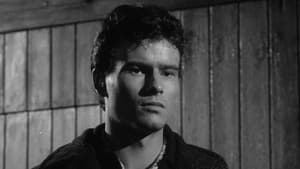Video Sources 0 Views

Synopsis

Delve into the gripping world of Tiger Bay, a compelling crime drama thriller from 1959, now beautifully colorized for a visually stunning experience. Featuring a young Hayley Mills in one of her earliest and most memorable roles, alongside Horst Buchholz, this film offers a unique blend of suspense, emotion, and social commentary set against the backdrop of Cardiff’s bustling docklands. Perfect for fans of classic cinema and those seeking a captivating story with stellar performances, this HD download brings a timeless gem to your screen. Some sources also refer to the film as The child and the killer.
Tiger Bay tells the story of Gillie Evans (Hayley Mills), a spirited young girl who witnesses a murder committed by a Polish sailor, Bronislav Korchinsky (Horst Buchholz). Instead of turning him in, Gillie forms an unlikely bond with the fugitive, seeing in him a kindred spirit of sorts. As they evade the authorities together, their relationship deepens, blurring the lines between right and wrong.
The film explores themes of innocence, alienation, and the complexities of human connection. With the police closing in, Gillie and Bronislav must navigate the treacherous streets of Tiger Bay, relying on each other for survival. The film culminates in a tense and emotional climax, testing the limits of their loyalty and challenging the audience’s perceptions of justice. Ultimately, Tiger Bay is a powerful and moving story about the unexpected bonds that can form in the face of adversity.
The film boasts remarkable performances from its lead actors:
-
Hayley Mills as Gillie Evans
-
Horst Buchholz as Bronislav Korchinsky
-
John Mills as Superintendent Graham
-
Megs Jenkins as Mrs. Philips
-
Donald Houston as Detective Pete Williams
Tiger Bay expertly blends elements of crime drama and thriller, with touches of social realism that reflect the gritty atmosphere of its setting. Its suspenseful plot and emotionally charged performances make it a captivating and thought-provoking film.
Released in 1959, Tiger Bay captures the socio-economic landscape of post-war Britain, particularly the working-class communities of Cardiff’s docklands. The film reflects a growing trend in British cinema towards social realism, exploring the lives and struggles of ordinary people. Tiger Bay also marked a significant moment in Hayley Mills’ career, establishing her as a major child star and showcasing her remarkable talent.
This colorized version of Tiger Bay has been meticulously restored using advanced digital techniques, enhancing the visual impact while preserving the film’s original atmosphere. The colorization process involved a detailed analysis of the original black and white footage, with careful attention paid to recreating the authentic colors of the costumes, sets, and locations. This painstaking process breathes new life into the film, making it even more accessible and engaging for modern audiences. The techniques may include the use of AI-driven algorithms for color palette selection and frame-by-frame adjustments to ensure accuracy and consistency. This updated version allows viewers to appreciate the film’s visual details as never before, further enriching the storytelling experience.
-
: J. Lee Thompson
-
: John Hawkesworth, Shelley Smith
-
: Louis Vance
-
: Eric Cross
-
: Peter Hunt
-
: The Rank Organisation
-
: The Rank Organisation
-
: 106 minutes
-
: MP4
-
: HD (1080p)
-
: Compatible with most devices, including smartphones, tablets, computers, and smart TVs.
Tiger Bay (1959) is widely regarded as a classic of British cinema, praised for its compelling story, strong performances, and atmospheric direction. Hayley Mills’ portrayal of Gillie Evans is particularly memorable, earning her critical acclaim and solidifying her status as a rising star. The film’s exploration of complex themes and its realistic depiction of working-class life have also been lauded by critics and audiences alike.
-
: What is Tiger Bay about?
-
A: Tiger Bay is a crime drama about a young girl who forms an unlikely bond with a fugitive after witnessing a murder.
-
-
: Is Tiger Bay (1959) a well-known Hayley Mills film?
-
A: Yes, Tiger Bay is one of Hayley Mills’ early and most acclaimed performances, showcasing her talent as a child actor.
-
-
: Is this version of Tiger Bay colorized?
-
A: Yes, this version has been professionally colorized to enhance the viewing experience.
-
-
: What makes Tiger Bay interesting for classic film fans?
-
A: Tiger Bay offers a compelling story, strong performances, and a realistic depiction of post-war Britain, making it a valuable piece of cinematic history.
-
-
: What is the download format?
-
A: The download format is MP4, which is compatible with most devices.
-
-
: What resolution is the download?
-
A: The resolution is HD (1080p), providing a high-quality viewing experience.
-
Watch Tiger Bay Today!















